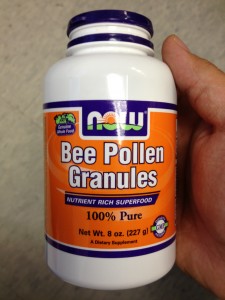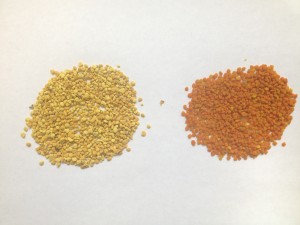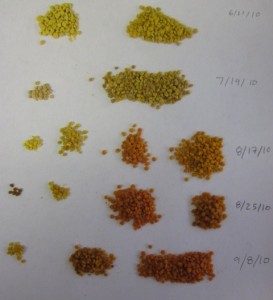
Installing pollen traps onto your honey bee colonies can provide many benefits. First off, you can harvest the pollen granules from a hive for human consumption. Bee pollen is marketed as a “Nutrient Rich Superfood,” and is sold at various health stores. While there has not been much research into the potential benefits of taking bee pollen as a nutritional supplement, some people swear that it is a cure for many different ailments. At the UMD lab, I seem to be the only person that has mildly enjoyed the taste. If you do decide to harvest pollen from your bees, make sure that you leave enough for the colony. You can do this by only engaging traps for a day or two at a time, and cycling the hives that you take pollen from.

In my opinion, the true benefit that comes from using pollen traps is the information you can learn about the foraging behavior of your colonies. You can obtain foraging information about your colonies by engaging a pollen trap for a day and then taking a subsample of the pollen collected. I sort a three gram subsample by color. Each color of pollen will come from a different plant, so by sorting it you can get an idea of the number of different types of plants your bees are foraging on. You can also learn which plants your bees are visiting the most by weighing out each pollen color and comparing it to the total weight of your subsample. Identifying what specific plant your pollen came from can be tricky. I use a compound microscope and some reference pictures to try and determine which plant family the pollen came from. Processing samples in this way can give you an idea of what plants are in bloom in your area, and when they bloom.

Starting in 2014, BIP will be starting a pollen trap program for beekeepers participating in our Real Time Disease Load Survey. Beekeepers choosing to participate will be sent a kit containing a pollen trap and the necessary materials to collect samples. The kit will contain twelve 50 mL tubes, which will allow beekeepers to send in a pollen sample biweekly over the six month sampling period. More information on this new BIP effort will be coming to the Bee Informed website soon. We will also be discussing the BIP pollen trap program at our booths at the upcoming ABF and AHPA meetings in January. So feel free to come by and ask us about them!